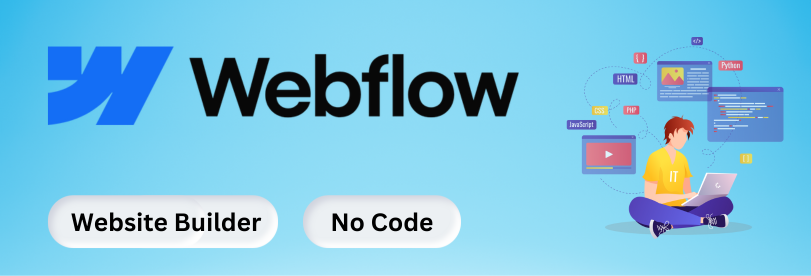Webflow


What is Webflow?
In today's digital landscape, establishing a dynamic online presence is crucial for success. Webflow stands out as a robust platform that allows users to design, build, and launch responsive websites visually. With its user-friendly interface and automatic generation of clean, semantic code, Webflow empowers designers, developers, and entrepreneurs to create professional-grade websites without extensive coding knowledge.
Tool’s Unique Selling Proposition (USP)
Webflow excels by combining design freedom with developer-level control, positioning itself as a visual web development platform. This allows users to achieve both aesthetic excellence and optimal performance without the need for deep programming expertise.
Key Features
Main Features Overview
- Responsive Design: Webflow ensures your site looks great on any device by automatically adjusting to different screen sizes.
- Visual CMS: Easily manage and update your site content with a user-friendly content management system.
- SEO Optimization: Integrated SEO tools help improve your site's visibility on search engines.
- Dynamic Interactions: Create engaging animations and interactive elements to enhance user experience.
Special Features and Capabilities
- E-commerce Functionality: Build and customize online stores within Webflow for a seamless shopping experience.
- Code Export: Export clean HTML, CSS, and JavaScript for further customization or use in other projects.
- Hosting and Security: Reliable hosting services with automatic backups ensure your site's data is secure and accessible.
Compatible Platforms and Tools
Webflow operates independently but integrates with various third-party tools such as Zapier, Mailchimp, and Shopify to expand your website’s capabilities. It also offers an API for more specialized integrations tailored to your business needs.
Pricing and Plans
Overview of Pricing Structures
Webflow provides several pricing plans to cater to different requirements:
- Site Plans: Suitable for personal blogs, business websites, and online stores, with pricing based on the features needed.
- Account Plans: Designed for freelancers and agencies managing multiple projects, offering advanced dashboard features.
- Enterprise Plans: Custom pricing for large organizations requiring advanced security, support, and scalability.
Both monthly and annual billing options are available, providing flexibility in managing costs.
Pros and Cons
Advantages of Using Webflow
- Intuitive drag-and-drop interface streamlines the design process.
- Extensive customization options for creating unique, professional websites.
- Comprehensive hosting and security features eliminate the need for third-party services.
Limitations and Considerations
- Initial learning curve for users unfamiliar with web design concepts.
- Costs can escalate with the addition of advanced features or as your site grows.
- Limited built-in integrations might necessitate additional tools for specific functionalities.
When to Consider Using an Alternative
Consider an alternative if you need a simpler website builder with lower costs or if you require specific features and integrations not offered by Webflow.
Recommendations and Who It’s Best For
Webflow is ideal for designers seeking to turn their creative visions into reality without limitations. It’s also a great choice for startups and businesses aiming to establish a strong online presence without relying heavily on developers.
Conclusion
Webflow is a powerful, design-focused platform revolutionizing website creation. Its unique combination of visual design freedom and automatic coding sets it apart from traditional web development tools. Whether you're a designer, developer, or business owner looking to create an outstanding digital presence, Webflow provides the essential tools and features to bring your ideas to life.







